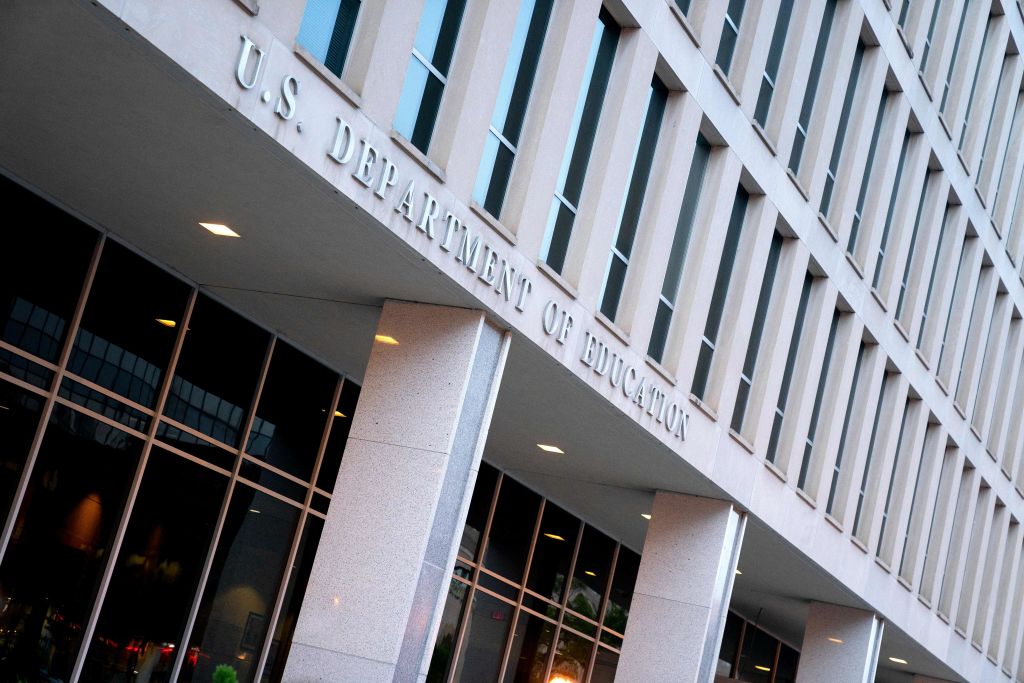In a campaign video released last week, former President Donald Trump said that if reelected he would close the Department of Education and “end education coming out of Washington, D.C.” He’s not the only one: Four other Republican presidential candidates promised the same during the first GOP debate last month, and Vivek Ramaswamy even proposed that he could do so unilaterally.
But what would that mean practically?
What does the department do?
The Department of Education has a few main functions, including: handle federal financial aid, conduct and disseminate research, and prevent discrimination. With 4,400 employees, it is the smallest Cabinet-level department.
Student aid is “perhaps the biggest role” of the department, Katharine Meyer, a fellow at the Brookings Institution, tells The Dispatch. The federal work-study program, Pell grants, and federal student loans are all administered by the department, which was granted $79.6 billion in discretionary spending for fiscal year 2023. Of that, $45 billion went toward K-12 education, with the majority dedicated to grants for low-income students and students with disabilities, but almost 90 percent of K-12 funding comes from state and local governments.
The Department of Education also funds research on subjects such as literacy, education leadership, and cognition to “learn about what’s going on at a national scale,” Meyer says. It is also responsible for enforcing civil rights laws such as Title VI and Title IX in institutions that receive federal funding.
However, states and local governments hold most of the power when it comes to funding, educational policy and oversight, developing curricula, and establishing academic standards.
Why abolish it?
Some argue that the Constitution does not grant the federal government power over education, and that states would do a better job of distributing those funds. In a campaign video, Ramaswamy accused the Department of Education of using federal funding as a “cudgel” to pressure states into adopting “toxic racial and gender ideology-based agendas.”
But it’s not clear what eliminating the department would actually look like, and candidates haven’t given many specifics. Former Vice President Mike Pence has suggested providing block grants to each state on a per-student basis and leaving civil rights enforcement to the Department of Justice. Ramaswamy proposed moving the department’s workforce training programs to the Department of Labor.
Rather than getting rid of all the department’s functions entirely, it’s more likely that a president would transfer some of them to other federal agencies in this way, Anastasia Boden, director of the Robert A. Levy Center for Constitutional Studies at the Cato Institute, tells The Dispatch: “We’ll still see aspects of the Department of Education, even if it’s not under that department in particular.”
She adds that parts of the department are “very politically popular.” Only 5 percent of registered voters oppose the Pell grant program, compared to 65 percent who support it, according to a 2021 survey.
What can the president do?
The Department of Education has been the subject of Republican criticism since President Jimmy Carter signed it into existence in 1979, separating it from the former Department of Health, Education, and Welfare. While campaigning for president in 1980, Ronald Reagan promised to abolish it, but failed, citing a lack of congressional support.
Ramaswamy made the case last week that if elected president, he could eliminate it without congressional approval at all, claiming that the president is “already empowered by Congress to dramatically reduce the size and scope of sprawling federal agencies.” Legal experts disagree.
“The president’s authority is actually very limited, which is why it’s surprising to see, at the debates, the candidates act like they can just get rid of it with a snap of their fingers,” Boden says. “The president isn’t going to be able to do this alone. He or she is going to have to get some participation from Congress.”
A 2017 report from the Heritage Foundation, which supports abolishing the department, also asserted that the president has “no statutory authority to reorganize the executive branch, except where acts of Congress delegate authority to make particular changes.”
But there are ways that a president could limit the Department of Education’s reach without removing the department entirely, Boden adds. He or she could reduce the number of staff by refusing to make appointments, eliminate agency-created boards, or put a stop to particular practices.
Still, it’s hard to tell how serious calls to abolish the department are. Presidents have split Cabinet departments into separate agencies in the past, but only one Cabinet department, the Post Office Department, has successfully been abolished in more than a half-century, according to the New York Times. But it was abolished with an act of Congress, and eliminating other non-cabinet federal agencies has also required congressional authorization in the past: Dwight Eisenhower replaced the Federal Security Agency with the Department of Health, Education, and Welfare with his authority under the Reorganization Act of 1949.
“If you don’t have a real plan, and if in reality a lot of the basic functions are going to be continuing but under a different agency, then you’re really just engaging in political pandering,” Boden says.






Please note that we at The Dispatch hold ourselves, our work, and our commenters to a higher standard than other places on the internet. We welcome comments that foster genuine debate or discussion—including comments critical of us or our work—but responses that include ad hominem attacks on fellow Dispatch members or are intended to stoke fear and anger may be moderated.
With your membership, you only have the ability to comment on The Morning Dispatch articles. Consider upgrading to join the conversation everywhere.